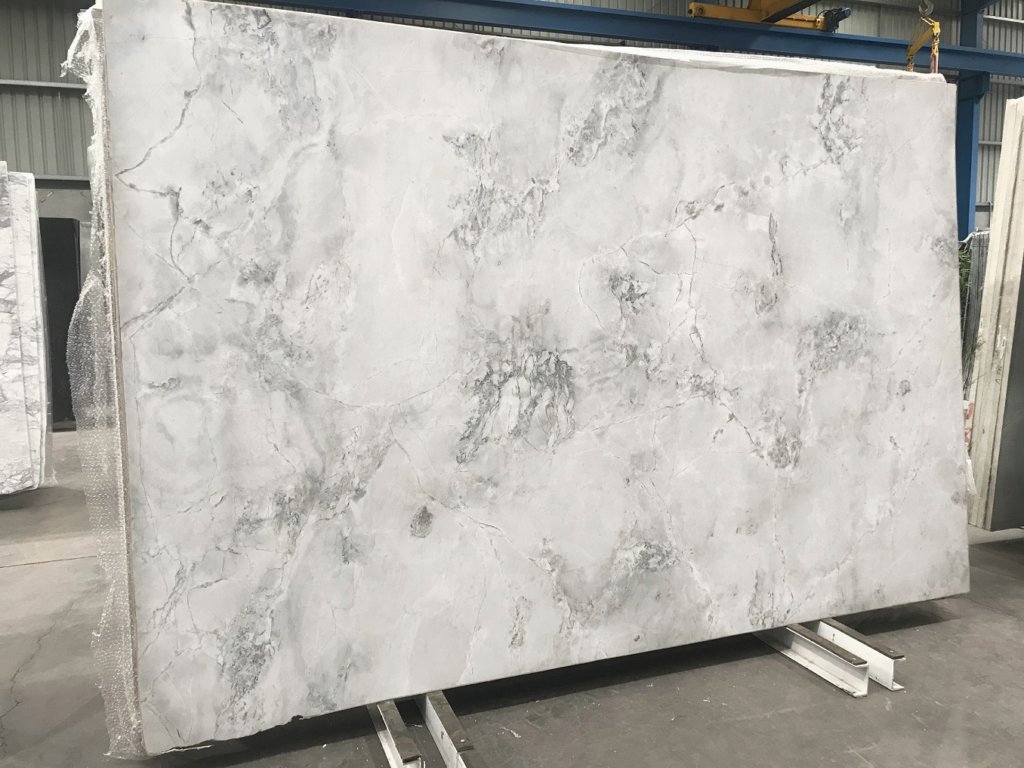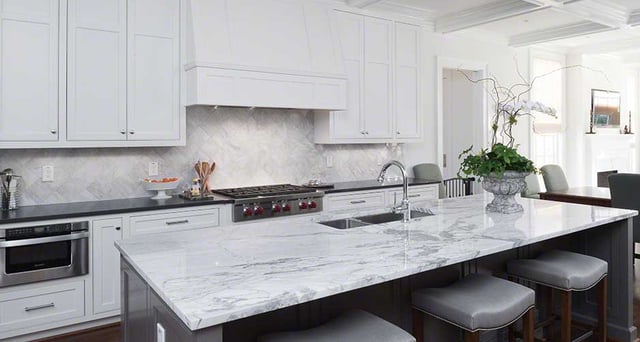by Christian Szlanic • April 17, 2023
Dolomite Countertops vs. Marble Countertops: Which One Is Right for Your Home?
When choosing the perfect stone countertop for your home, two popular options are Dolomite Countertops and Marble Countertops. Both materials are stunning and have unique characteristics that make them a great choice for different applications. In this article, we’ll dive into the differences between these two types of stone, and help you decide which one is the best fit for your home.
Dolomite Countertops: The Harder Marble Alternative
Origin
Most dolomite slabs are quarried from Italy, Spain, India, Brazil, and China, but the mineral can be found all around the globe.
Aesthetic
Dolomite comes in a wide variety of colors such as whites and grays, to greens with veins of blues, pinks, and browns. Oftentimes, Dolomite looks similar to marble, just with a bigger, more noticeable crystalline structure and its own unique patterns and flow.
Properties
Dolomite is formed naturally in sedimentary basins where Limestone or Lime mud is soaked in Magnesium-rich groundwater. Over time, with heat and pressure, it undergoes a process called dolomitization. Many places sell dolomites as “hard Marble”, and while it isn’t actual Marble, it does share a lot of qualities and characteristics with marble. Dolomite is on the softer side of the material spectrum, with a Mohs hardness scale rating of around 3.5-4. The slightly higher hardness of Dolomite makes it more resilient than Marble; however, if not properly sealed and treated, it can experience similar wear and tear, like etching and staining from acids left on the surface.
Marble Countertops: The Classic, Elegant Choice
Origin
A large majority of marble is quarried from Italy, India, Spain, and China. Other notable places include Greece, Turkey, and even the United States of America.
Aesthetic
Marble comes in a wide array of colors, ranging from neutral whites, creams, and grays to blacks, reds, blues, and greens. What all marble varieties have in common are their soft, smooth flowing veins.
Properties
Marble is formed naturally when Dolomite or Limestone recrystallizes under the influences of immense heat, pressure, and Calcium Carbonate-rich aqueous solutions, causing it to have a much finer crystal structure and a smoother look. Marble is known for being softer than Dolomite, which can make it more susceptible to damage over time.
Conclusion
Both Dolomite and Marble countertops have their own unique beauty and characteristics. If you’re looking for a more durable option with a similar appearance to marble, Dolomite may be the right choice. However, if you prefer the classic elegance and timeless beauty of Marble, it might be worth considering despite its softer nature.
To learn more about the different types of stone countertops available, visit Rock Bottom Granite’s Home Page or explore their live inventory. You can also browse their pages about Quartz and Granite for even more options to consider.


